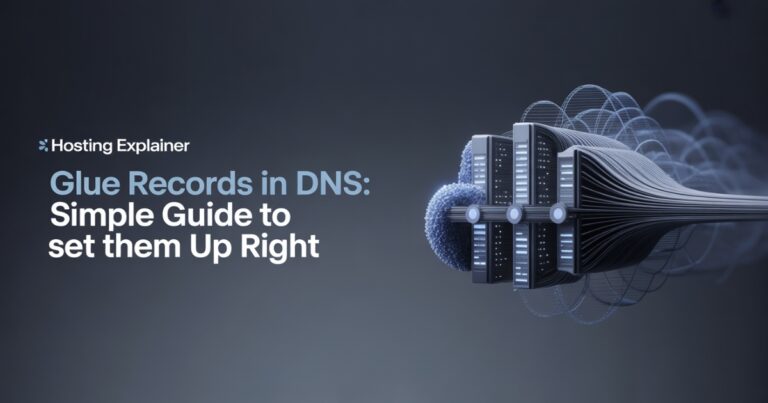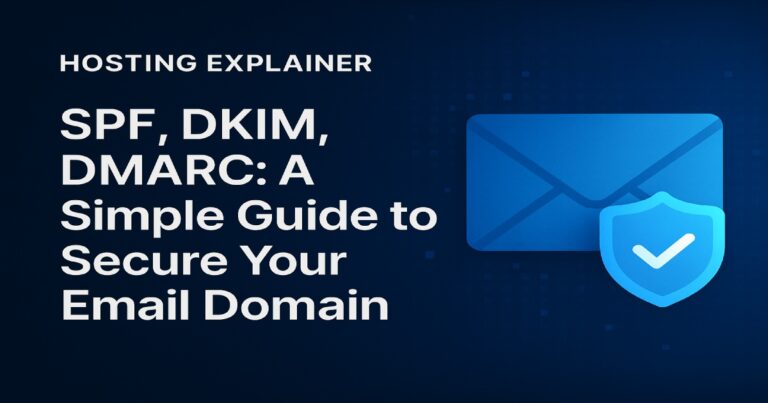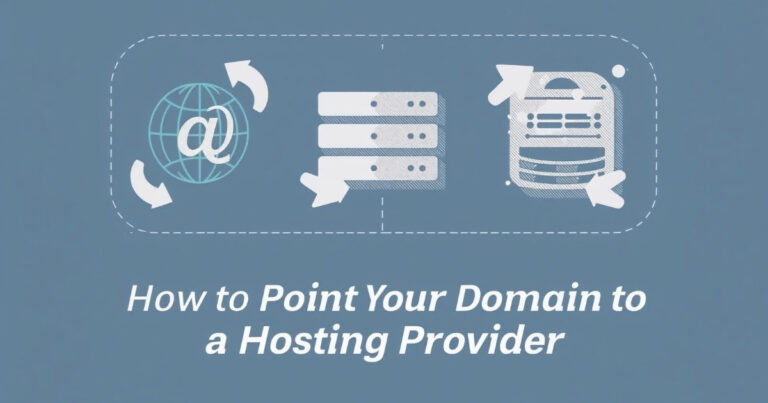Internationalized Domain Names (IDNs): Setup, Benefits & Risk
Finding the right domain name is like finding your voice online—it’s how people recognize and remember you. But what if your audience doesn’t use the English alphabet? That’s where Internationalized Domain Names (IDNs) come in.
In this 2025 guide, I’ll explain what IDNs are, how they work, their real benefits, possible risks, and how you can set one up safely. Whether you’re a business owner, developer, or marketer, this guide will help you decide if IDNs fit your global growth strategy.

What Are Internationalized Domain Names (IDNs)?
In simple terms, IDNs are domain names that use characters from different languages, not just English letters. They allow you to include characters like “ü,” “ñ,” or even entire scripts like Arabic (عربي), Chinese (中文), or Cyrillic (русский).
Traditional domains only support ASCII—letters A–Z, numbers, and hyphens. That’s limiting in a multilingual world.
Example:
- ASCII version: example.com
- IDN version: münchen.de or 例子.中国
Behind the scenes, IDNs use something called Punycode to convert non-English characters into a browser-friendly format. So münchen.de becomes xn--mnchen-3ya.de.
| Feature | ASCII Domain | IDN Domain |
|---|---|---|
| Character Set | A–Z, 0–9, hyphen | Unicode (ü, ñ, 中文, ع, etc.) |
| Accessibility | Limited to English | Global, multilingual |
| Example | example.com | café.fr |
By supporting native scripts, IDNs make the web more inclusive and human-friendly.
How IDNs Work: Behind the Scenes
You might wonder, “How do browsers and servers handle these special characters?” Here’s the short answer: every IDN goes through Unicode encoding and Punycode conversion so it can still fit within the old DNS system.
Step-by-step:
- You type a domain like 例子. 中国.
- The browser converts it into Punycode (xn--fsqu00a.xn--fiqs8s).
- DNS looks up that encoded name and sends you to the right server.
This process is seamless, you don’t see the conversion happen. Most modern browsers, email systems, and domain registrars now fully support IDNs.
ICANN (the global Internet authority) sets strict rules to ensure consistent encoding, security, and compatibility for all IDNs.
Benefits of Internationalized Domain Names (IDNs)
Now that we know how they work, let’s talk about why they matter.
- Inclusivity and Accessibility
IDNs let people use the web in their own language. This builds trust and makes it easier for users to remember and type your site. - Brand Recognition
A domain in your audience’s native script shows respect for their culture. It strengthens your brand identity and makes your business feel local, even when it’s global. - SEO and Local Ranking
IDNs can indirectly help your multilingual SEO strategy. Search engines use language and location signals, and having a domain in the local language supports those cues. - Competitive Edge
With so many English domains already taken, IDNs open new naming possibilities. They’re ideal for expanding into untapped markets.
A Japanese café might use コーヒー.jp instead of a long English name. It’s natural, local, and memorable.
Risks and Security Concerns of IDN Domains
Of course, no innovation comes without challenges. IDNs have one big concern security.
- Homograph Attacks
Some characters from different scripts look identical to English ones. For example, the Cyrillic “а” looks like the Latin “a.” Hackers exploit this by creating fake look-alike sites (e.g., “аррle.com” instead of “apple.com”). - Phishing and Spoofing
Users might not notice the difference and enter sensitive information. Major browsers now block suspicious mixed-script domains to reduce this risk. - Technical Limitations
Some older email clients or internal systems still struggle with IDNs. While support improves yearly, testing remains crucial.
Security Tips
- Register multiple versions of your domain (IDN and ASCII).
- Always enable HTTPS.
- Use a trusted registrar with IDN monitoring tools.
- Regularly check for look-alike domains.
These small actions prevent major damage.
How to Set Up an IDN Domain
Setting up an IDN is simple once you know the steps. Here’s a quick checklist:
- Step 1: Choose Your Domain Name
Pick a name in your target language that’s easy to read and spell. Avoid symbols or uncommon characters. - Step 2: Convert It to Punycode
Use a free online Punycode converter to see how your domain will look technically. - Step 3: Select an IDN-Supported Registrar
Choose a provider that supports IDNs—GoDaddy, Namecheap, or Google Domains are good options. - Step 4: Register and Configure DNS
Add the Punycode version to your DNS. Ensure both Unicode and ASCII versions resolve correctly. - Step 5: Test Compatibility
Check your site in Chrome, Safari, and Edge. Make sure email links and redirects work smoothly.
| Step | Action | Tools |
|---|---|---|
| 1 | Pick domain | Use native language keyboards |
| 2 | Convert | punycoder.com |
| 3 | Register | GoDaddy, Namecheap |
| 4 | Configure DNS | Hosting dashboard |
| 5 | Test | Browser and email tools |
You’re done! Your multilingual domain is ready to go global.
IDNs and SEO: Do They Impact Rankings?
This is a common question, so let’s answer it clearly. IDNs don’t directly boost rankings. Google treats all domains equally, regardless of language or script. But what they do affect is user experience and local engagement.
When users trust your domain and stay longer on your site, that sends positive signals to search engines. It’s part of SXO, search experience optimization.
To make the most of IDNs for SEO:
- Add hreflang tags for multilingual pages.
- Align on-page content language with the domain.
- Use local backlinks and directories.
This holistic approach helps your brand show up naturally in local search and AI-driven results like SGE (Search Generative Experience).
IDNs in 2025 and Beyond: Voice, AI, and SGE
The rise of AI assistants and voice search makes IDNs even more relevant.
When someone says, “Find café punto es” or “search for 北京大学,” AI systems now understand and retrieve localized IDNs accurately.
In 2025, Google’s SGE (AI-powered search) analyzes language context more deeply than ever. IDNs give clear cues about the audience, culture, and content language—all crucial for AIO and GEO optimization.
Looking ahead, expect broader AI language support and cross-language recognition, making IDNs a key part of your global identity.
FAQs—Internationalized Domain Names
- What is an IDN domain?
An IDN is a domain name that uses non-English or accented characters (like café.fr or 東京.jp). - Are IDN domains safe?
Yes, when registered with a trusted provider and protected by HTTPS and monitoring. - How do I convert an IDN to Punycode?
Use an online Punycode converter. For example, café.fr becomes xn--caf-dma.fr. - Are IDNs good for SEO?
They don’t directly improve ranking, but they strengthen user trust and multilingual relevance, which supports better engagement. - Can I use IDNs for email?
Yes, most modern email systems support them, though older ones may not.
Expert Insights & Final Thoughts
To sum it up, Internationalized Domain Names (IDNs) open the web to everyone, in every language. They connect cultures, expand markets, and make the internet truly global.
From my own experience helping brands go international, I’ve seen how a simple local domain builds instant trust. People click on what feels familiar.
Still, balance enthusiasm with caution: test compatibility, secure your setup, and monitor your brand. Done right, IDNs can be a small technical change with a massive impact on accessibility and growth.
Your quick checklist:
- Register with a trusted registrar
- Use SSL/TLS
- Convert and test Punycode
- Watch for look-alike domains
- Localize content
If you want to future-proof your online identity, IDNs are worth exploring because in 2025, being global means being local everywhere.






